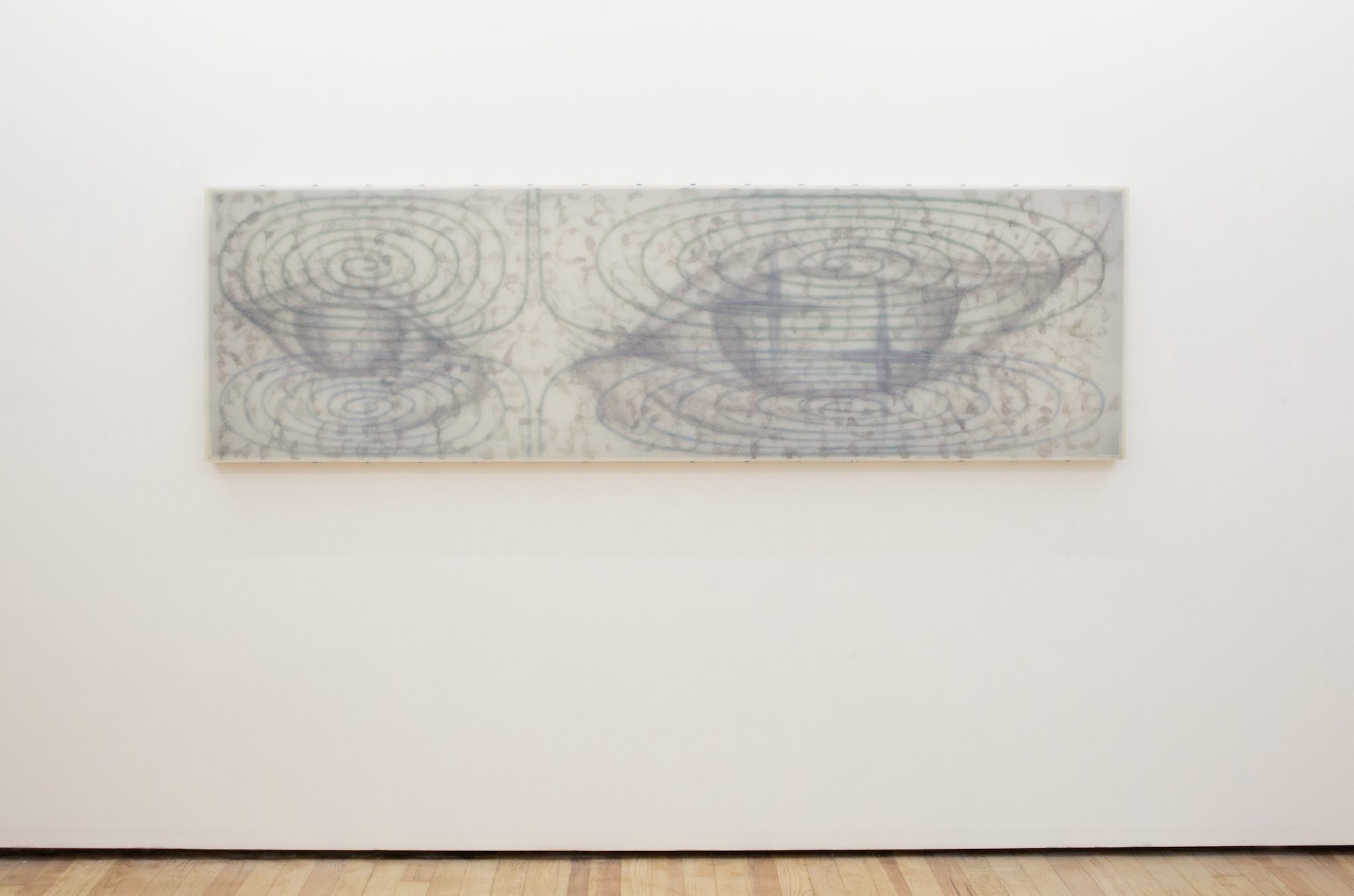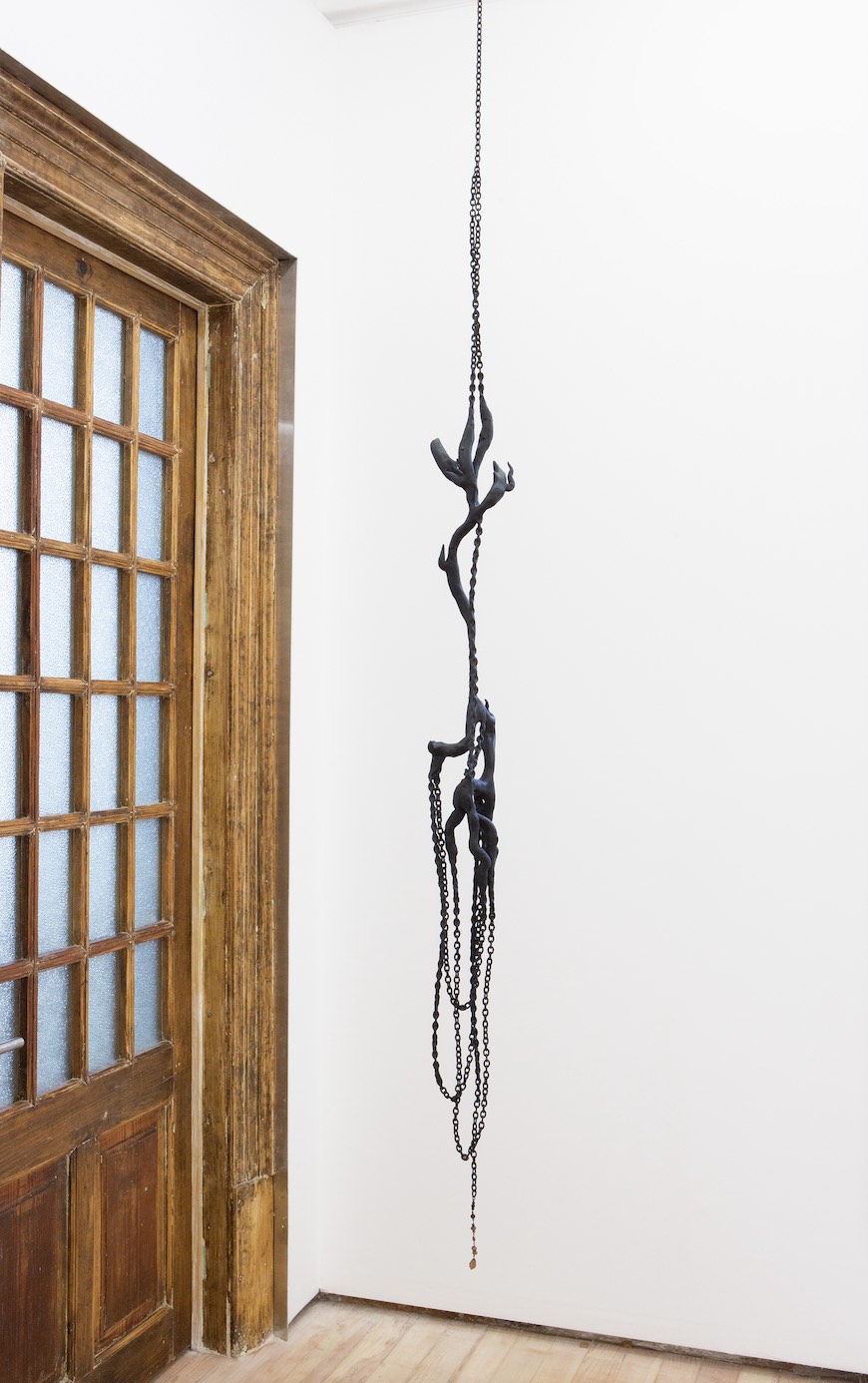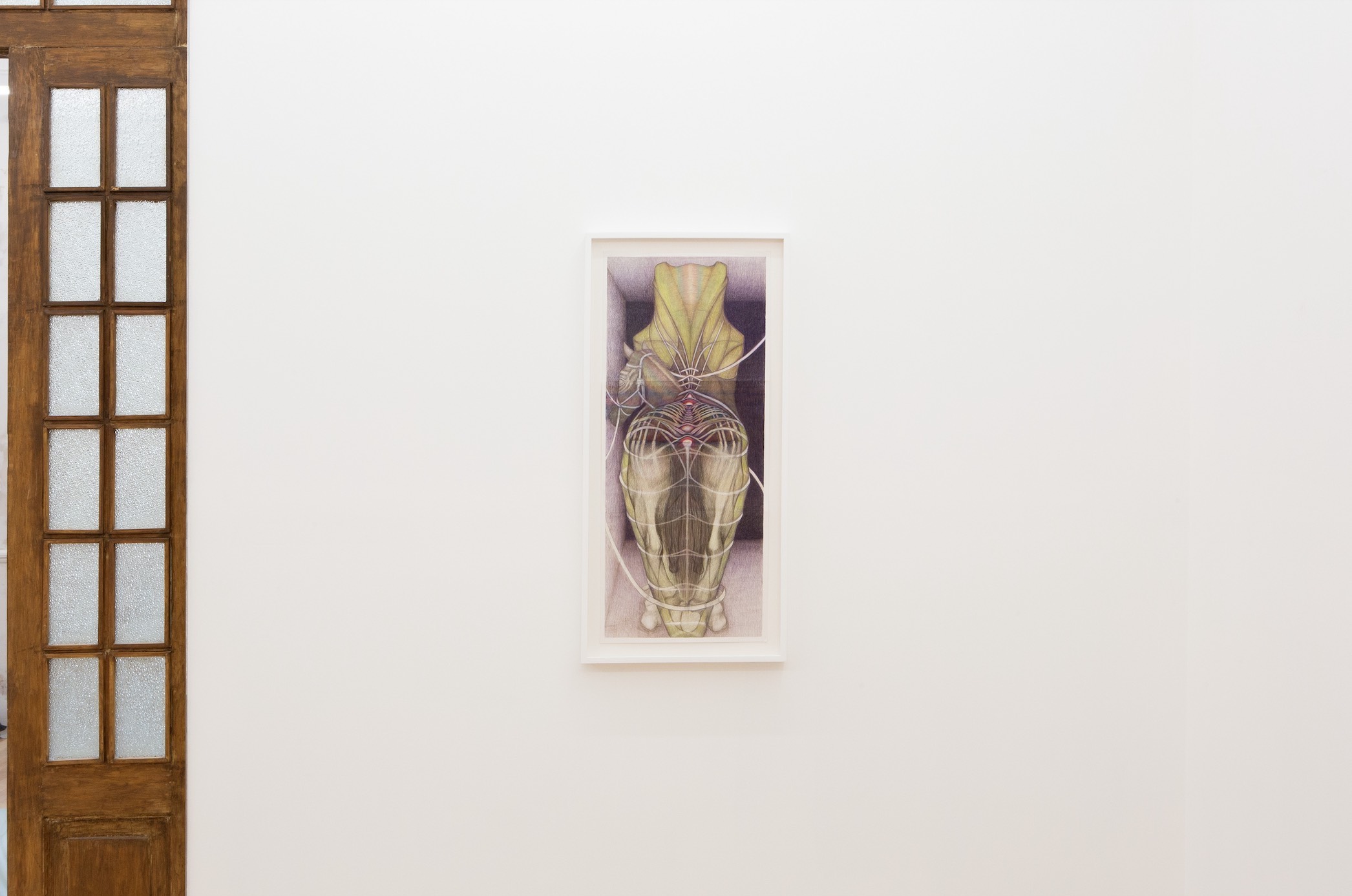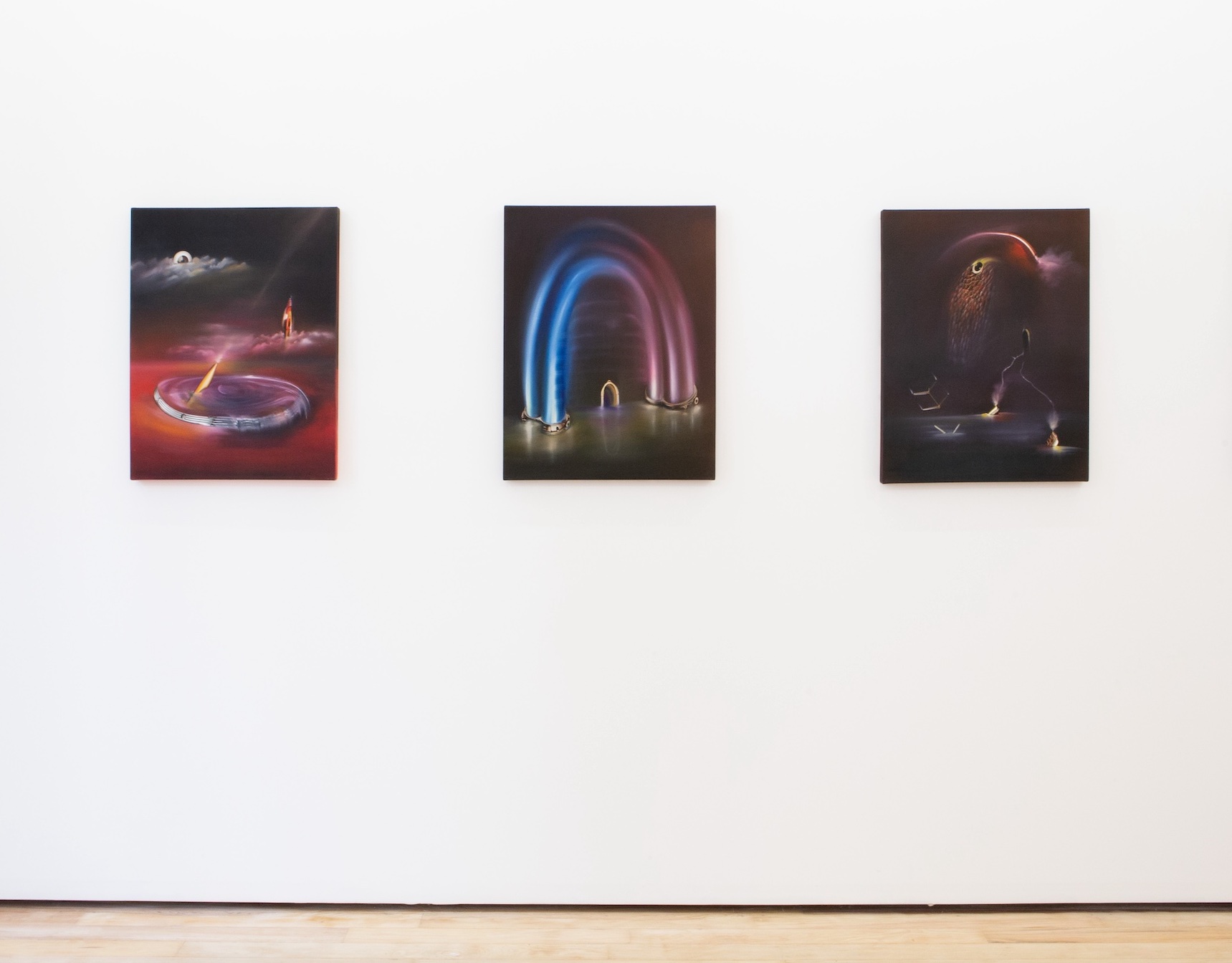
Review
Registrations on the Body and Disturbances of the Soul
by Stefanía Acevedo
Inaugural Exhibition, Deli Gallery Mexico City
Reading time
5 min
It is very common to speak of the body in the third person: we say that the body gets tired, resists, that it’s fragile or that it hurts. We articulate it from an internal assumption that’s separate from knowledge of the body—at the same time, when something hurts in the soul we usually feel punctures or tension in some point of the body, though the relationship with that precise place where it hurts it is not so evident. In 1677, Spinoza already articulated the false separation between soul and body; he said, “the soul and the body are one and the same thing […] and, consequently, the order of the actions and passions of our body corresponds by nature to the order of the actions and passions of the soul.”*1 From that point, it has become essential to locate those movements and conditions that remind us that any disturbance of the soul will touch the body in all its secretions, frictions, and scratches.
This inseparable union between the treatment of the body and the soul takes place in the house that Deli Gallery has selected as its new haven in Mexico City. Its interior presents a continuum with the pieces making up Hic Sunt Dracones: from the gallery walls showing layers of all the houses/skins that have been transformed, through the dialogue between the garden and the bottle-green sculpture by Bayo Alvaro, up to the painting that externally frames Encuentro indisoluble (Indissoluble Encounter) by Amia Yokoyama. One enters this house and sees its organs via the work of eleven artists.
It is not so easy to find the separation/union between registrations of the soul and the body; one is commonly considered internal and the other, something with extension. Nevertheless, the skin is just that border that calls into question the distinction and limit between one and the other. This confusion between what could be inside or what could be ripped or tattooed on top takes place in the silicone-skin paintings presented by ASMA, putting in tension—together with Carolina Fusilier—the possibilities of painting: on the one hand, the frame pinning down the silicone layers; on the other, the painting accompanied by foreign bodies that camouflage themselves—are they part of the painting or do they invade it?

There is a first tension that does not lighten, but that is transformed into sections: that which leaves the body but does not completely separate itself from it. Like when one’s hands sweat from nerves. These fluids are delicately petrified in Amia Yokoyama’s ceramic pieces, via sensuality, in pastel colors, anchored in Manga. They are also observed in the gestures regarding fragility that accompany, not without their chains, the sculptures of Bayo Alvaro.

The fluid that is most feared—because it can be a good or bad omen—is blood, which appears in red-pink tones that flow from the witch bodies that Nicole Chaput depicts in three paintings that, via repetition, make one think of or weigh the sensual: breasts, buttocks, possibilities for the crotch, fingers, guts, menstruation. We know, once again thanks to Spinoza, that a body cannot but be composed of other bodies. In this composition that again confuses separation/union the organs are drawn by Javier Barrios and the torso-horse by Enzo Iwase.

And what’s a body that doesn’t dream?—as Miguel Ángel Solano Ortiz, director of Deli Gallery Mexico and curator of the exhibition, said to us: “dreams are also housed in the body.” Perhaps that’s why dreams hurt so much: they stay in the body and sometimes they’re unpleasant because they show us that things can always be worse.
Two centuries after Spinoza, Freud maintained the same correspondence between the affects of the soul and those of the body; except that he wondered about certain of the body’s sufferings in relation to possible pains of the soul. Now we know that imagination, fantasies, and dreams are the most important spaces for exploring a cartography of the soul and its disturbances. Thus, psychic treatment (treatment of the soul) could not fail to be accompanied by the body’s affects.

A few registrations of dreams are present in Hic Sunt Dracones, starting with the title itself, which hints at the existence of imaginary beings that can sometimes show up in nightmares, as in Fusilier’s apocalyptic scenarios; or hide in spaces of dancing or passivity, as in the painting by Darby Milbrath; or let us see only a head, as in the sculpture by Diego Espaillat. But dreams also give rise to nostalgic symbolism, as in La vampira mexicana con cara de buitre (The Mexican Vampiress with the Face of a Vulture) by Astrid Terrazas, which evokes the return to an origin that cannot be located by any coordinate. Even with Yi To, we can see the dreams that, owing to insomnia, never arrive and that we await from the cave/ruin of everyday life, looking at our cell phones.
One last difficulty: to refrain from talking about dreams as though they were separate from us, and instead compose ourselves with them. To allow them their registrations and to observe in which precise place of the body/soul they are housed.
Hic Sunt Dracones can be visited until March 18.
Translated to English by Byron Davies
*1: Baruch Spinoza, The Ethics.
Published on March 12 2023